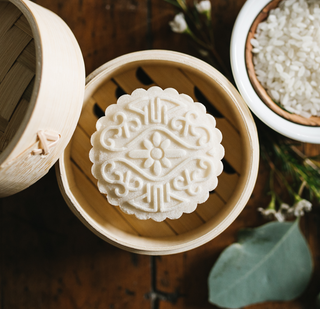Having luscious, vibrant locks isn't just about the products you use; it's also about understanding your hair's porosity. Hair porosity refers to your hair's ability to absorb and retain moisture, and knowing your hair's porosity can be a game-changer in your hair care routine. In this guide, we'll delve into the world of hair porosity, providing tips for every hair type to achieve the shine and health they deserve.
What is Hair Porosity?
Before we dive into the tips, let's grasp the concept of hair porosity. Hair porosity is categorized into three types: low, medium, and high. Low porosity hair has a tightly bound cuticle layer that resists moisture, medium porosity hair allows moisture to pass in and out moderately, and high porosity hair has gaps and holes in the cuticle, making it overly porous.
Identifying Your Hair Porosity
Determining your hair porosity is the first step in creating an effective hair care routine. An easy at-home test involves placing a strand of clean hair in a glass of water. If it floats, you likely have low porosity hair; if it sinks slowly, your hair has medium porosity, and if it sinks quickly, you probably have high porosity hair.
Tips for Low Porosity Hair
1. Warm Water is Your Friend
Low porosity hair repels water, making it difficult for moisture to penetrate. Use warm water to open the cuticle and allow products to absorb better.
2. Lighter Products for Quick Absorption
Opt for lightweight, water-based products that won't sit on the hair's surface. Products with humectants like glycerin can help attract and retain moisture.
3. Regular Deep Conditioning with Heat
Deep conditioning is crucial for low porosity hair. Apply a deep conditioner and use heat, like a steamer or a warm towel, to open the cuticle and allow the product to penetrate deeply.
Tips for Medium Porosity Hair
1. Balance is Key
Maintain a balance in your hair care routine. Use a combination of moisturizing and protein-based products to keep your hair healthy and resilient.
2. Regular Deep Conditioning
Deep conditioning should be a regular part of your routine to keep your hair well-hydrated. Consider a deep conditioning treatment at least once a week.
3. Protect Your Hair from Heat and Environmental Damage
Medium porosity hair is more susceptible to damage, so it's essential to protect it. Use a heat protectant when styling and avoid excessive exposure to the sun and harsh weather conditions.
Tips for High Porosity Hair
1. Seal in Moisture
High porosity hair loses moisture quickly, so sealing it in is crucial. Use heavier products like creams and butters to create a protective barrier.
2. Protein Treatments for Strength
Since high porosity hair often lacks protein, regular protein treatments can help strengthen the hair shaft and reduce porosity.
3. Cold Water Rinse
Finish your hair wash with a cold water rinse to help close the cuticle and lock in moisture.
Conclusion:
Mastering your hair's porosity is a journey that involves understanding your hair's unique needs and catering to them. Whether you have low, medium, or high porosity hair, the key is consistency and adapting your routine to suit your hair's specific requirements. Armed with this knowledge, you can confidently embark on a hair care routine that brings out the best in your locks, leaving them shining with health and vitality. Remember, your hair is as unique as you are, and embracing its individuality is the first step towards a hair care routine that truly works wonders.
What is Hair Porosity?
Before we dive into the tips, let's grasp the concept of hair porosity. Hair porosity is categorized into three types: low, medium, and high. Low porosity hair has a tightly bound cuticle layer that resists moisture, medium porosity hair allows moisture to pass in and out moderately, and high porosity hair has gaps and holes in the cuticle, making it overly porous.
Identifying Your Hair Porosity
Determining your hair porosity is the first step in creating an effective hair care routine. An easy at-home test involves placing a strand of clean hair in a glass of water. If it floats, you likely have low porosity hair; if it sinks slowly, your hair has medium porosity, and if it sinks quickly, you probably have high porosity hair.
Tips for Low Porosity Hair
1. Warm Water is Your Friend
Low porosity hair repels water, making it difficult for moisture to penetrate. Use warm water to open the cuticle and allow products to absorb better.
2. Lighter Products for Quick Absorption
Opt for lightweight, water-based products that won't sit on the hair's surface. Products with humectants like glycerin can help attract and retain moisture.
3. Regular Deep Conditioning with Heat
Deep conditioning is crucial for low porosity hair. Apply a deep conditioner and use heat, like a steamer or a warm towel, to open the cuticle and allow the product to penetrate deeply.
Tips for Medium Porosity Hair
1. Balance is Key
Maintain a balance in your hair care routine. Use a combination of moisturizing and protein-based products to keep your hair healthy and resilient.
2. Regular Deep Conditioning
Deep conditioning should be a regular part of your routine to keep your hair well-hydrated. Consider a deep conditioning treatment at least once a week.
3. Protect Your Hair from Heat and Environmental Damage
Medium porosity hair is more susceptible to damage, so it's essential to protect it. Use a heat protectant when styling and avoid excessive exposure to the sun and harsh weather conditions.
Tips for High Porosity Hair
1. Seal in Moisture
High porosity hair loses moisture quickly, so sealing it in is crucial. Use heavier products like creams and butters to create a protective barrier.
2. Protein Treatments for Strength
Since high porosity hair often lacks protein, regular protein treatments can help strengthen the hair shaft and reduce porosity.
3. Cold Water Rinse
Finish your hair wash with a cold water rinse to help close the cuticle and lock in moisture.
Conclusion:
Mastering your hair's porosity is a journey that involves understanding your hair's unique needs and catering to them. Whether you have low, medium, or high porosity hair, the key is consistency and adapting your routine to suit your hair's specific requirements. Armed with this knowledge, you can confidently embark on a hair care routine that brings out the best in your locks, leaving them shining with health and vitality. Remember, your hair is as unique as you are, and embracing its individuality is the first step towards a hair care routine that truly works wonders.

